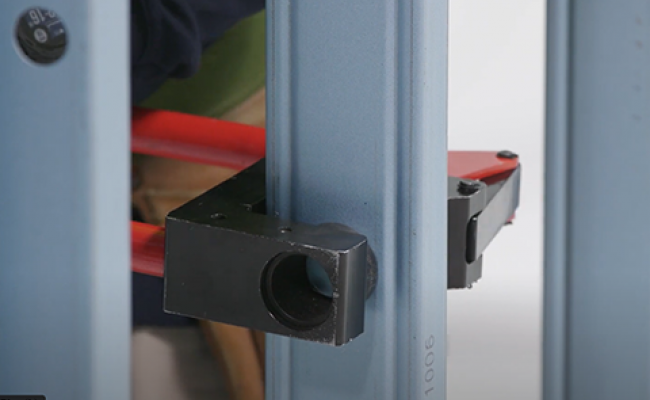Warning
Please be advised this website is for internal review purposes only and is not to be distributed until advised.
Please be advised this website is for internal review purposes only and is not to be distributed until advised.
LGS frame manufacturers employ detailers who use CAD/CAM technology to draw up highly accurate plans. These plans make allowances for key trades (electricians, plumbers etc.) so they can install quickly without needing to make multiple on-site modifications.
Communication with builder/fabricator on plumbing run provisions prior to LGS design and fabrication is always recommended.
If possible, floor frames are oriented in the direction of the main pipe runs. If this is not possible, detailers strive to make truss gaps large enough for plumbing to pass through (as per below image)

For plumbers, service holes are punched in the frames during manufacturing, meaning that frames can arrive on-site with service holes in the right place and all lined up. The service holes are either pre-punched and flared or pre-punched only. For hot and cold-water services, flared holes or the use of grommets in unflared holes is essential to avoid damage to pipes that can be caused by the movement when valves are opened and closed and complies with AS/NZS 3500:1 Plumbing and Drainage.
In flared holes, copper pipes, which are a dissimilar metal, are required to be isolated from LGS frame via grommets or sleeve of oversized pipe.
The following image shows plumbing pipe work being threaded through an LGS wall frame.

Grommets or clips are used to secure and protect the pipe and reduce noise. Silicone may also be used to dampen noise but should not used exclusively to house the pipe through punched holes. AS/NZS 3500:1 Plumbing and Drainage. The pictures below show the sequence required to install a grommet.



Grommets with fins/legs hold the piping in place more firmly and help dampen noise. The yellow grommet shown in the images above and below is an example of these types of grommets.


Common grommet sizes are 28mm and 32mm.

Australian Standards including AS/NZS 3500.1:2021 are available to purchase on the Standards Australia Store website in web reader or hard copy format.

Find out the methods to create new service holes and recommended sizes and layouts.